By 2024, there will be approximately 1.7 billion mobile augmented reality (AR) users worldwide, 1.5 billion more than in 2015. In 2022, there will be approximately 1.1 billion mobile augmented reality users worldwide.
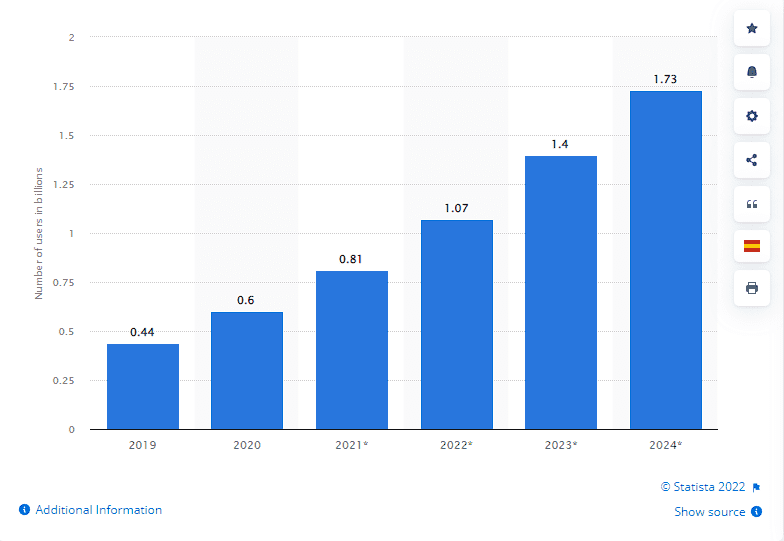
Statistics on augmented reality app development
Key factors contributing to the growth of the augmented reality market include:- growing demand for AR devices and applications in healthcare,
- growing demand for AR in the retail and e-commerce sectors due to COVID-19,
- growing investment in the AR market,
- growing demand for AR devices and technologies in the global automotive industry, and others.
If you want to develop your AR app, let’s run through all the parts of extended reality, how AR, VR and MR differ from each other, and what benefits augmented reality provides for business.
Difference between AR, VR and MR
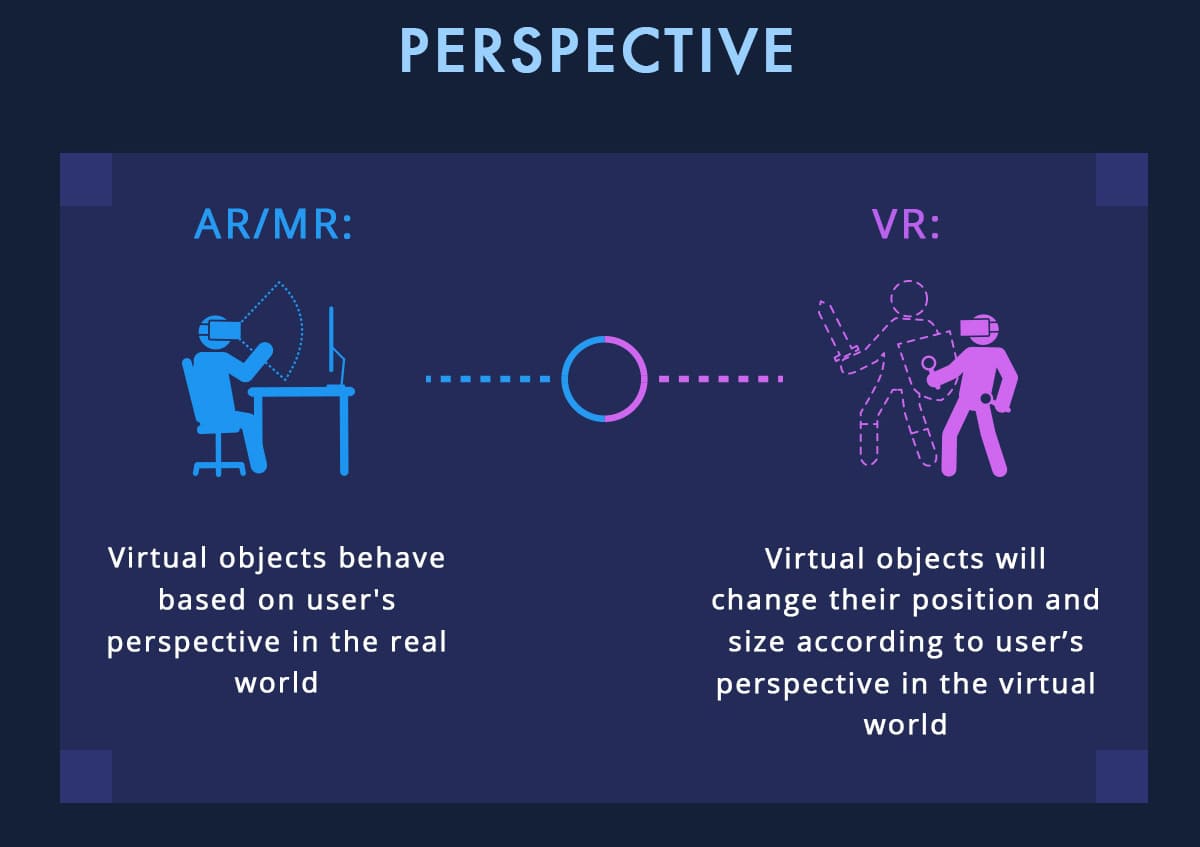
The difference between AR, MR and VR.
VR or virtual reality. VR implies complete immersion in digital reality through virtual reality glasses. Wearing virtual reality glasses, users can dive into the depths of an ocean, visit a museum at the other end of the world, and take a ride on the craziest attractions without leaving home. This pleasure is not cheap, for VR glasses you will need to pay at least $600 and not every computer is compatible with such technologies.AR or augmented reality. In the AR case, the user still sees the real world, but augmented by digital objects. Users can see them through the smartphone screen, but for a complete immersion, they can also use special glasses. The introduction of virtual objects can take place in different formats, such as image or video.
MR or Mixed Reality. It’s a reality where the digital world interacts with the real world. In contrast to AR, the virtual content is not just added to the real environment, the user can interact with it directly. This new reality is possible thanks to the development of computer vision systems, graphic processing, technologies for displays, input systems, and cloud computing. Btw, the Brivian team has expertise in computer vision, so we can help you to realize the most daring ideas.
The advantage of augmented reality over the others is that it has an environment where we see the physical world together with digital objects using simple devices. VR, on the other hand, requests to buy additional equipment, like VR glasses. AR is always at your fingertips if you have a smartphone. Virtual reality creates its own world where people can immerse themselves into, while augmented reality adds virtual elements to the real world. It turns out that VR interacts only with users, while AR interacts with the entire outside world. Thus, AR opens up new opportunities for businesses to interact with people.
This is how the already mentioned Pokémon Go game became mega popular. The developers used AR to improve the user experience and engagement in the game. They allowed all of us to interact with Pokémons in the real world! AR played a big role here because if the game existed in VR, players simply wouldn’t be able to move around the city in a VR helmet. AR allowed players to be in the game, even on bus rides.
History of AR technology
The development of augmented reality began with the development of virtual reality. In the 60s, the Sensorama simulator appeared. It used virtual technology, in which visual images were supplemented by air movements and vibrations.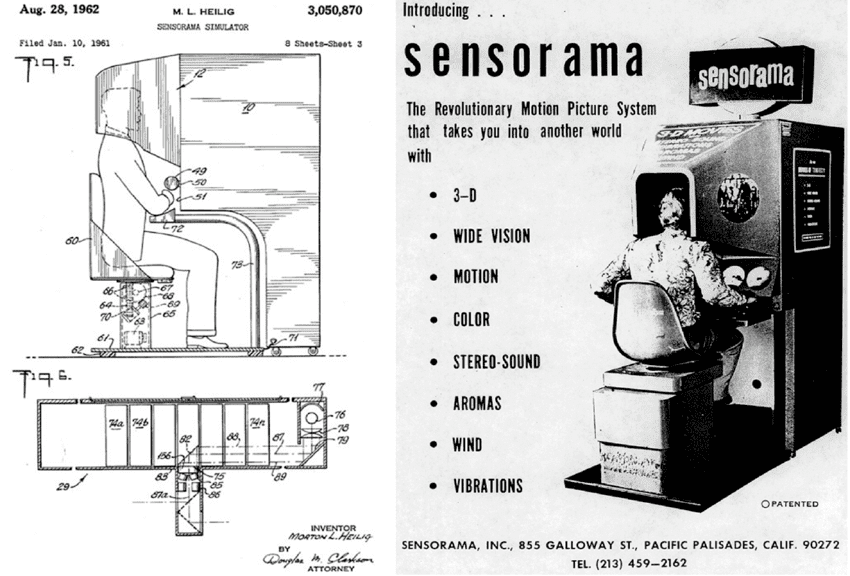
That’s what Sensorama looked like.
Of course, it’s not much like what we call augmented reality, but Sensorama was the progenitor of AR, VR and MR.
Later, Harvard professor Ivan Sutherland and his student Bob Sproull developed a device that looked more like augmented reality glasses. They broadcasted a picture from a computer, but its perspective changed depending on the position of the person’s head. It was a breakthrough for the time. After the leap made in the production of microprocessors in the 90s, the work greatly accelerated, and in 1995 Jun Rekimoto presented a prototype of an augmented reality mobile device. It was a display with a camera attached to the back, whose video stream was processed by a computer and, when a color marker was detected, displayed information about the object.In 1999, Hirokazu Kato created an open source library for writing applications with AR functionality called ARToolKit. It used real-time camera position and orientation recognition. This allowed the real and virtual images from the camera to be combined by overlaying computer graphics on the real markers. The term augmented reality itself was introduced by Boeing engineer Tom Codel in 1990: at that time, the company’s specialists were attaching digital displays to their heads to help them mount wires in the aircraft.
Now, in addition to interaction via the phone screen, another way to see AR in action is to use special AR headsets (glasses). Unlike VR helmets, AR headsets simply allow us to integrate certain digital objects into the real world without completely immersing us in the virtual environment. By adding AR to your product, you provide users with a new experience by allowing us to project digital data right in front of our eyes.
How do augmented reality apps work?
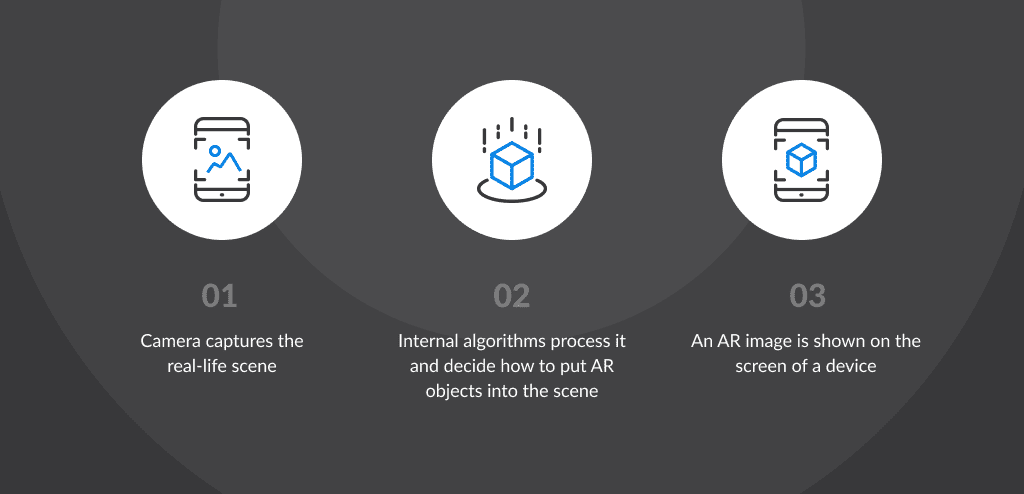
- The camera captures frames of real objects. This provides the basis for the scene in which the augmented objects are placed.
- Internal algorithms then process them and determine how to place the AR object in the image.
- The image is transmitted to the user’s device.
Types of augmented reality apps
The types of augmented reality apps depend on the technology used in its development.Marker-based AR
Marker-based augmented reality apps use target triggers to position objects in a given space. These markers determine where the app will place three-dimensional digital content in the user’s field of view. Triggers can be a QR code, a card, an icon, or an image. The user scans the trigger with the device’s camera, and the augmented reality app projects the appropriate augmented reality scene. An example of this type of augmented reality is used by Instagram and Snapchat through filters and games.Location-based AR
This type of AR is based on merging virtual objects in the user’s physical space using GPS data and device sensors. Sensors are used instead of markers. They provide information about the user’s location and place virtual objects in the real world. That’s how Pokemon GO, a location-based augmented reality game, works, bringing the user’s environment to life depending on where they point their device. AR reads it in real time using a camera, GPS, compass and accelerometer.Projection-based AR
This is one of the simplest types of AR and is a projection of light onto a surface. The user interacts with the projected surface by using their hands. Projection-based augmented reality uses one or more optical devices (projectors) that project a beam of light onto a specifically designed work surface, or in some cases, directly onto the parts the user is working on.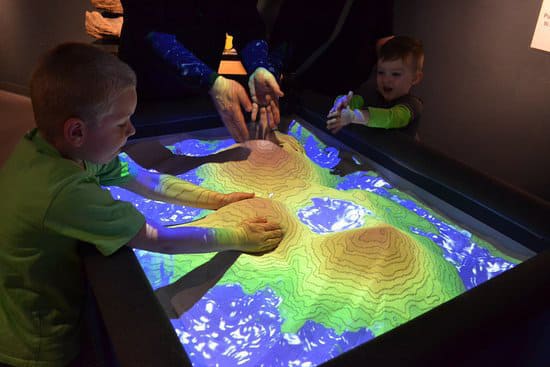 Projection-based AR can even be used for teaching in schools.
Projection-based AR can even be used for teaching in schools.
Niches to use augmented reality apps
Entertainment. ✔️ Of course, the greatest potential for the implementation of AR technologies is games. Such solutions can bring a completely different experience, allowing users to interact with virtual objects in the real world. Thanks to augmented reality, first-person shooters acquire new facets. In addition to Pokemon Go, there is Night Terrors, one of the first popular augmented reality horror games.
An example of Night Terrors as augmented reality app development in games.
Advertising. ✔️ The largest Internet platforms like Instagram realize that users are tired of all the usual advertising formats. Therefore, they actively develop new formats of interaction with the audience. These include augmented reality (AR). So thousands of new Instagram masks appeared on the platform, which gained crazy coverage, and their authors received a rapid growth of subscribers, traffic and recognition.Medicine. ✔️ AR has been taking root in this field for years. Numerous apps allow medical staff to provide better care to patients. Healthcare companies are using 3D augmented reality applications during surgeries and for diagnostics. In this case, it’s not just an improvement on old technology, but something that could save the lives of millions of people.
Retail. ✔️ Millions of people save their time and money by shopping online. But the choice of goods does not always coincide with the desired result. AR-applications give an opportunity to see the products before purchase and avoid problems with the correct choice.
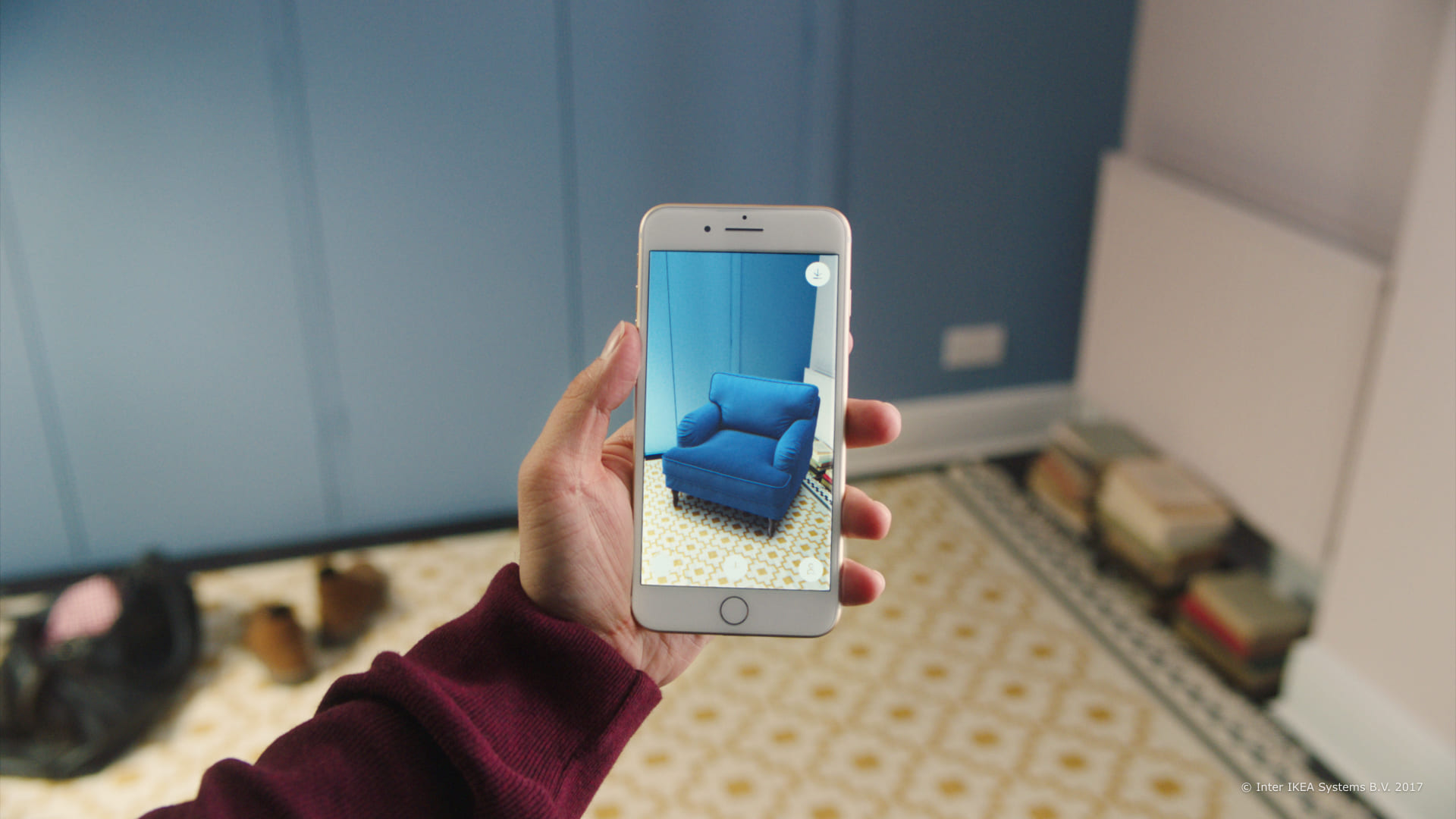 Ikea invites customers to put their furniture in the customer’s interior.
Ikea invites customers to put their furniture in the customer’s interior.
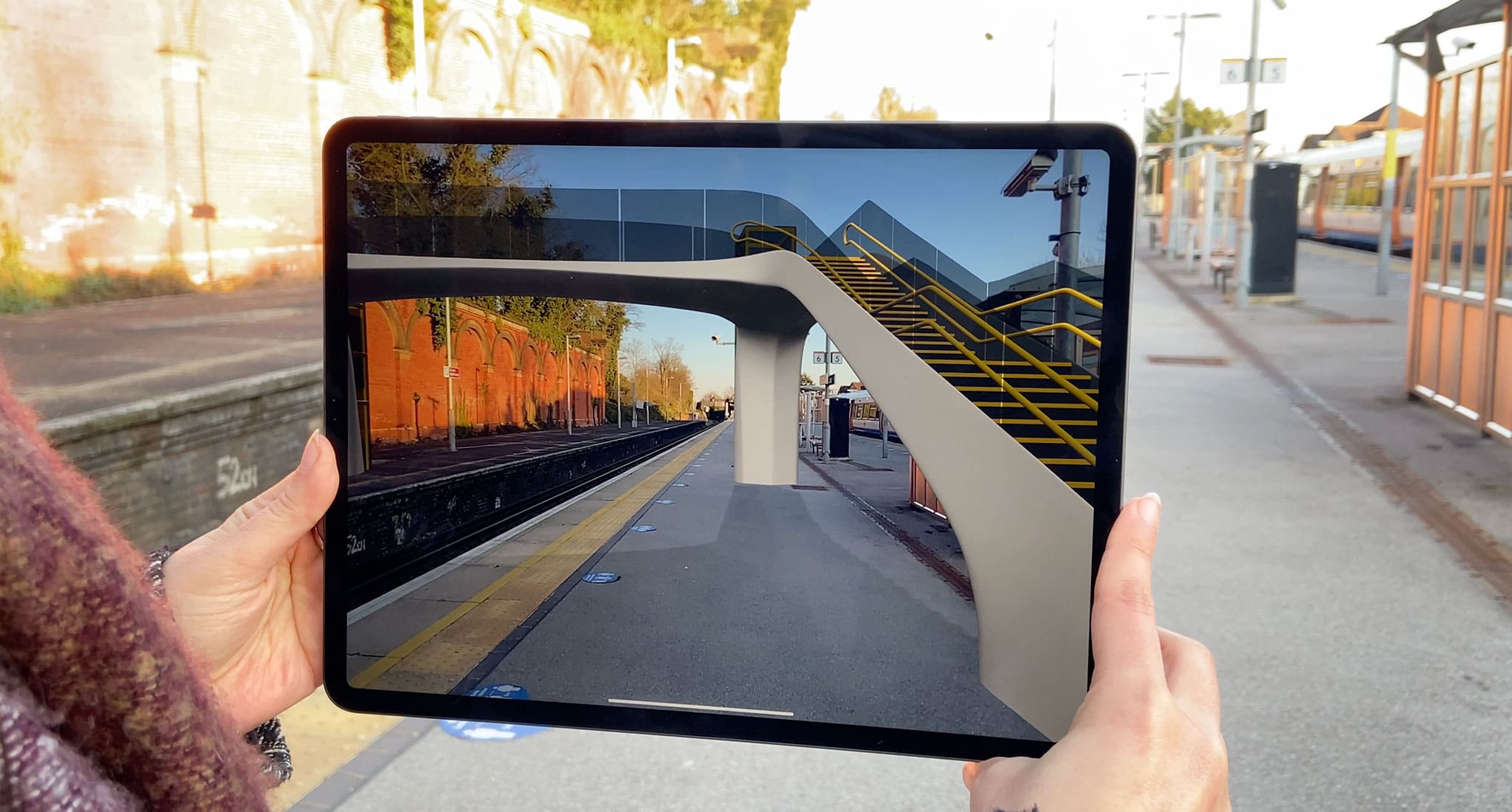
An example of augmented reality app development in real estate – ARki app.
We have figured out how to use AR apps. But how to develop an AR app and how much does it cost?How to make an augmented reality app?
The AR app development, regardless of the team or the tech stack, begins with business analysis. At this stage, a business analyst defines the business goals of your project and finds the best solution for them. The business analysis helps create augmented reality apps that are competitive and benefit end users. So you do not waste time developing unnecessary features, and can immediately make a product that will take a leading position in the market.AR app development involves these stages:
- Project Management
- UI/UX design
- Front-end development
- Backend-development
- Testing
- Release
- Approach to development
- Platforms (plus device adaptation — web responsiveness)
- Location of the software development partner and their rates
- Complexity of application design
- Number and complexity of features
At Brivian, cross-platform mobile app development with React Native costs from $30.000 and takes about 3 months for an MVP, while native development costs from $45.000 and takes about 4 months.
Our opinion
Augmented reality has made huge changes in the current market. The potential for augmented reality technology has opened up great opportunities in existing businesses. But of course, the virtual world will not replace the real world. We hope that there will be a balance between the two. Even though AR is a relatively new technology, it’s gaining momentum, and you will profit from it, because one day it will be everywhere and the big competitors who have it will take over the whole market.If you are interested in augmented reality and want to discuss your project or ideas, contact us. The Brivian team will help you realize your ambitions in developing augmented reality applications and will also advise you on possible solutions.